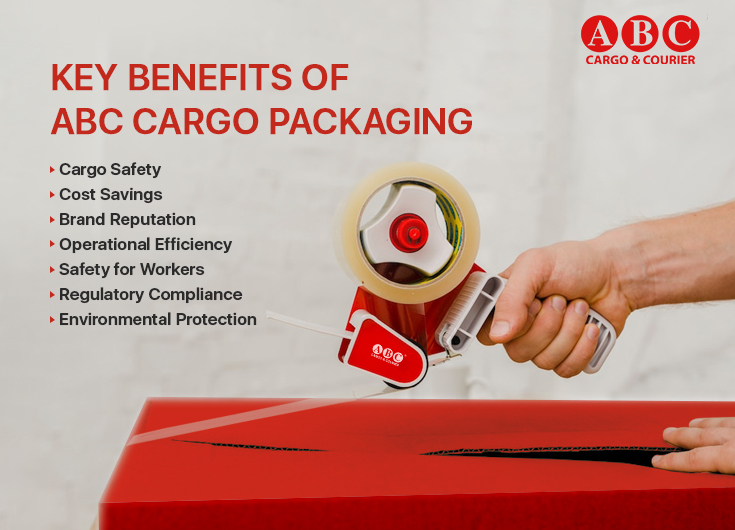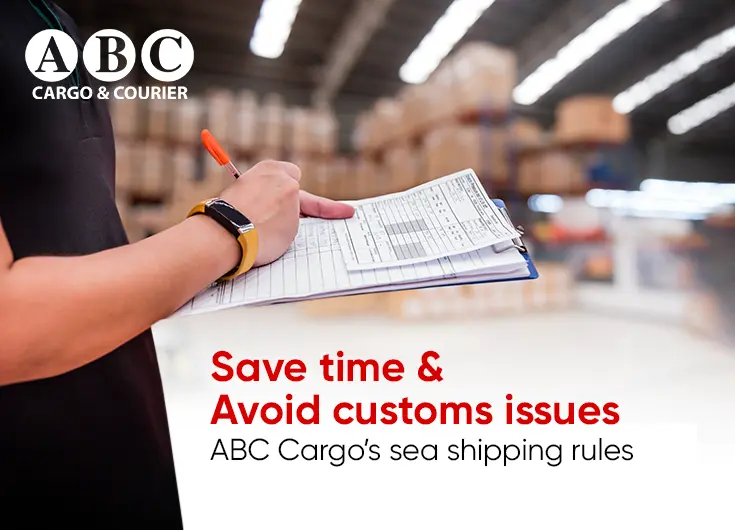Purchasing something valuable for someone you love dearly in itself is a pleasure. So sending it across the sea from a foreign land? Well, you cannot deny that it holds so much beauty and joy within it. But wouldn’t it all disappear to give way to a mortal disappointment if the gift they received somehow got damaged during the transit? It would be heartbreaking! Now, wouldn’t it be? If you think about it, a little precaution on your part while doing the cargo packaging would help prevent such mishaps. Here is a detailed study on how a few layers of bubble wrap and tape can change the whole fate of your shipment. Let’s analyze together how you can secure your packages by safely packing them whenever you send a shipment. So tune in to learn more about safe cargo shipping.
The Importance of Keeping Your Cargo Safe with Packaging Techniques
Cargo packaging is far more than a routine task; it’s a critical element in the entire freight shipping process. Your cargo endures numerous handling points, shifting pressures, and potential environmental hazards—all within the confines of a single shipment. Inadequate packaging may double the chances of your shipment getting damaged; needless to say, a much higher risk is involved in sending fragile or high-value items without packing appropriately, and in this case, mishandling could lead to financial losses as well as tarnished reputations.
Key Benefits of Proper Packaging
Investing in top-notch cargo packaging isn’t just smart or something you eventually catch up with—instead, it is the first and foremost step to a safe cargo shipping process. Let’s break down the perks:
- Cargo Safety: First, let us begin with the obvious reason. Protecting goods from damage is precisely why you pack in the first place. But how? By adding proper cushioning and sealing so that they arrive just as they are left.
- Cost Savings: Imagine fewer refunds, replacements, and repair costs for your cargo. Proper cargo packaging minimizes financial losses caused by damaged shipments, which is not at all a rare occurrence in e-commerce and freight shipping.
- Brand Reputation: Nothing adds to the reliability of shipping cargo like a delivery done on time and, of course, in perfect condition; happy customers will stick around for a pretty long time.
- Operational Efficiency: Streamlined loading, unloading, and stacking processes in freight shipping do save a lot of time and, of course, reduce the chances of any kind of mishap.
- Safety for Workers: Well-packaged items lower the chances of workplace accidents, keeping your team safe from heavy or unstable cargo.
- Regulatory Compliance: Even if no other reasons are involved, you need to pack properly to meet international freight shipping standards, which obviously will help you avoid penalties or delays. Better stay right than to pay upright.
- Environmental Protection: Eco-friendly packaging materials not only safeguard your goods but also show your commitment to sustainability, which is a tiny bit important nowadays, from both environmental as well as glamour perspectives.
Types of Packaging Substances
Here’s a quick rundown of commonly used substances for packing your cargo:
- Corrugated Boxes- Lightweight, strong, and versatile; ideal for most types of cargo.
- Plastic Containers- Perfect for moisture-sensitive goods and perishable items.
- Wooden Crates- Provide excellent support for heavy or fragile cargo.
- Pallets- Facilitate the stacking and transport of bulk shipments.
- Cushioning Materials- Bubble wrap, foam, and packing peanuts absorb shocks and vibrations.
- Moisture-Resistant Wraps- Protect against water damage, especially during sea freight shipping.
How to Select the Ideal Cargo Packaging Materials?
Selecting the ideal cargo packaging materials is not an easy task either. It depends on some serious judgment on your part. To make it easier, here are a few curated questions that you may ask yourself to make a better decision. Is your shipment fragile? Will it face harsh weather conditions? Are there specific regulatory requirements for your product? In simple terms, it depends and only depends on your cargo’s specific requirements.
For international door-to-door services, your choice of cargo packaging is another huge matter to think about and think over again. Any slight neglect on your part might cause serious damage to your shipments, which definitely is not something anybody would want under any circumstance. Lightweight materials might reduce costs, but compromising on durability can lead to losses. Similarly, using eco-friendly packaging can resonate with environmentally conscious clients. Striking a balance between cost-effectiveness and safety is what you need to achieve safe cargo shipping.
Best Practices to Safeguard Your Shipments
To ensure safe cargo shipping, follow these packaging best practices:
STEP 1: Use Appropriate Cushioning
Bubble wrap and foam protect delicate items.
STEP 2: Distribute Weight Evenly
Prevents items from shifting during transit.
STEP 3: Seal Packages Securely
Strong tape prevents items from spilling or exposure to moisture.
STEP 4: Label Clearly
Indicate handling instructions like “Fragile” or “This Side Up.”
STEP 5: Stabilize Cargo
Use straps or shrink wrap to keep items firmly in place.
STEP 6: Adhere to Regulations
Comply with packaging standards for hazardous or sensitive goods.
STEP 7: Opt for Tracking Services
Monitor your secure shipments to ensure their safety throughout the journey.
Conclusion: Safely Packaging Fragile Items for Secure Transportation
Let’s face it—when it comes to safe cargo shipping, everything boils down to one thing: proper cargo packaging. Let it be sending delicate glassware or heavy-duty industrial equipment, the way you pack your goods can make or break your shipment. But would that be enough? Of course not; clear and accurate labeling is another non-negotiable thing in cargo packaging, especially if you do business in UAE and are involved in freight shipping UAE on a weekly or monthly basis.
If you give even more importance to cargo safety, it would be better for you to simply choose a cargo service that does international door-to-door services and has tracking services; they most likely would provide you with cargo packaging service as an add-on, relieving you of the tensions that come with assuring safe cargo shipping.





